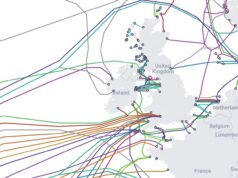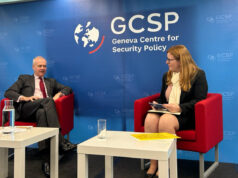A Reaper destroyed an armoured personnel carrier, Typhoons bombed a radio station east of Palmyra, Tornados attacked five targets in Mosul and a combined Tornado and Typhoon flight destroyed an armoured truck north-west of Bayji.
According to the Ministry of Defence, intelligence confirmed that Islamic State were using a small radio relay station east of Palmyra to spread their propaganda. A pair of Typhoons attacked the site on Thursday 25 May and successfully put it out of action with Paveway IVs.
Further north in Syria, a Reaper used a Hellfire missile to destroy an armoured personnel carrier near Tabqah, to the west of Raqqa. Two flights of Tornados patrolled over Mosul, where they conducted Paveway IV attacks on two medium machine-gun positions and three other Daesh-held buildings, whilst a mixed Tornado/Typhoon pair used a Brimstone missile to destroy an armoured truck some 30 miles north-west of Bayji.
The following day, Tornados used two Paveways to crater roads in west Mosul to hamper any attempt by Islamic State to move truck-bombs against the latest Iraqi advance.
According to a Ministry of Defence press statement:
“The RAF is continuing to support Iraqi forces in their effort to liberate western Mosul. While the operating environment in the city is very challenging, particularly given the closely-packed buildings, very narrow streets, and the density of the urban population, our aircrew have continued to deliver precision strikes in close support of Iraqi troops on the ground.
Daesh’s current tactics, including the illegal use of civilians as human shields, and fighting from sites such as schools, hospitals, religious sites and civilian neighbourhoods, increases the risk to innocent life. While no military operations come without risk, particularly in dense urban environments and against such inhuman Daesh tactics, the RAF continues to take all steps necessary to minimise civilian casualties.”
What is the current status of the air campaign?
In December 2016, it was reported that the Royal Air Force is operating at its most intense for 25 years in a single theatre of operation which far outstripped the UK involvement in Iraq and Afghanistan – RAF jets have dropped 11 times more bombs (1,276 strikes) on Syria and Iraq in the preceding 12 months than they had in the busiest year of action in Afghanistan a decade previously.
The cost of the operations against Islamic State and other details of the campaign were revealed in a briefing paper. In March 2015 the MoD confirmed that the net additional costs of the military air operation would be met from the Treasury Special Reserve; while the costs of training and equipping the Iraqi and Kurdish security forces, and the provision of key enablers, would be met from the MOD’s Deployed Military Activity Pool (DMAP).
In answer to a parliamentary question in September 2016 the MoD set the costs of the operation, between August 2014 and the 31st of March 2016, at £265 million (£45 million in the 2014-15 financial year, and £220 million in the 2015-16 financial year)












